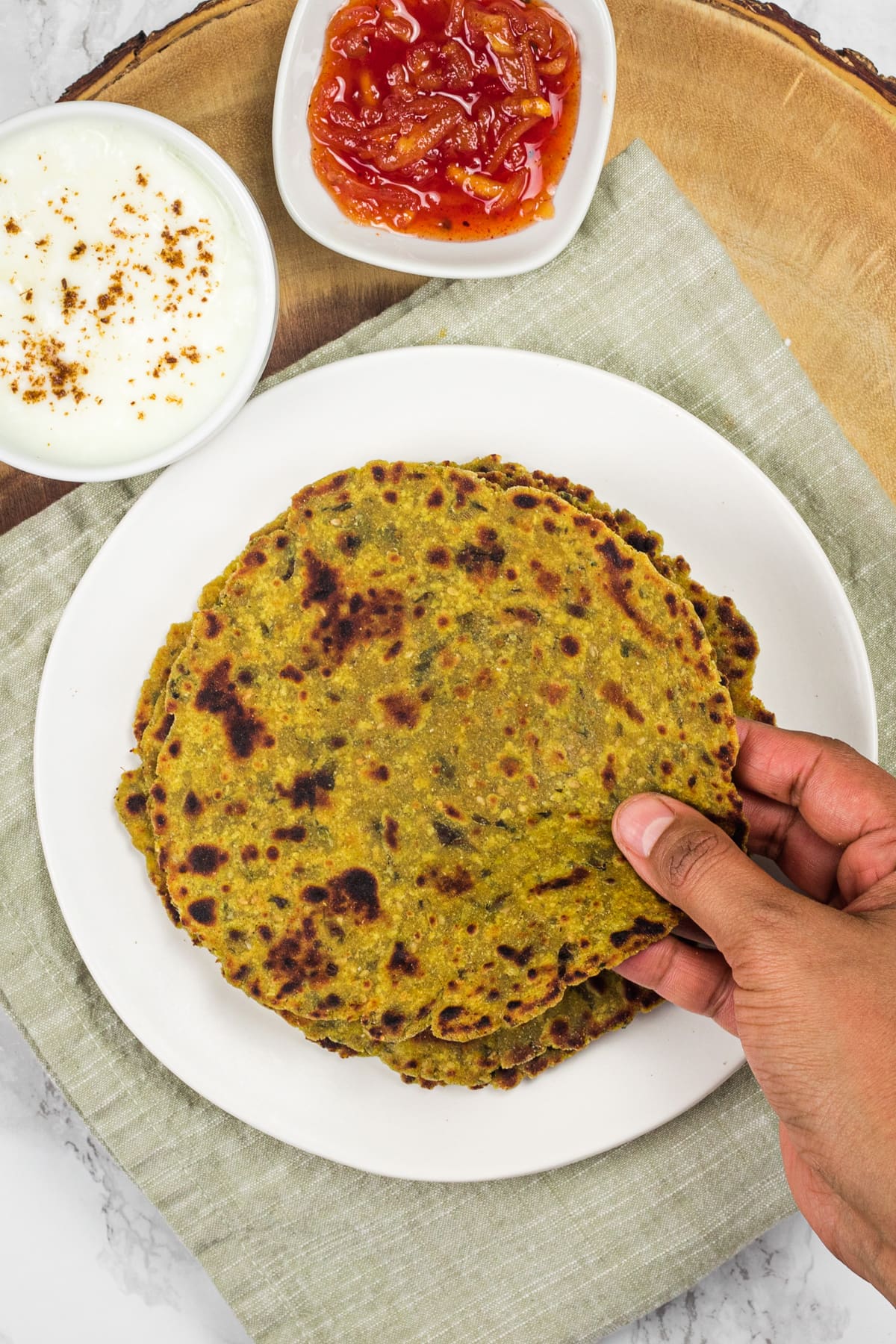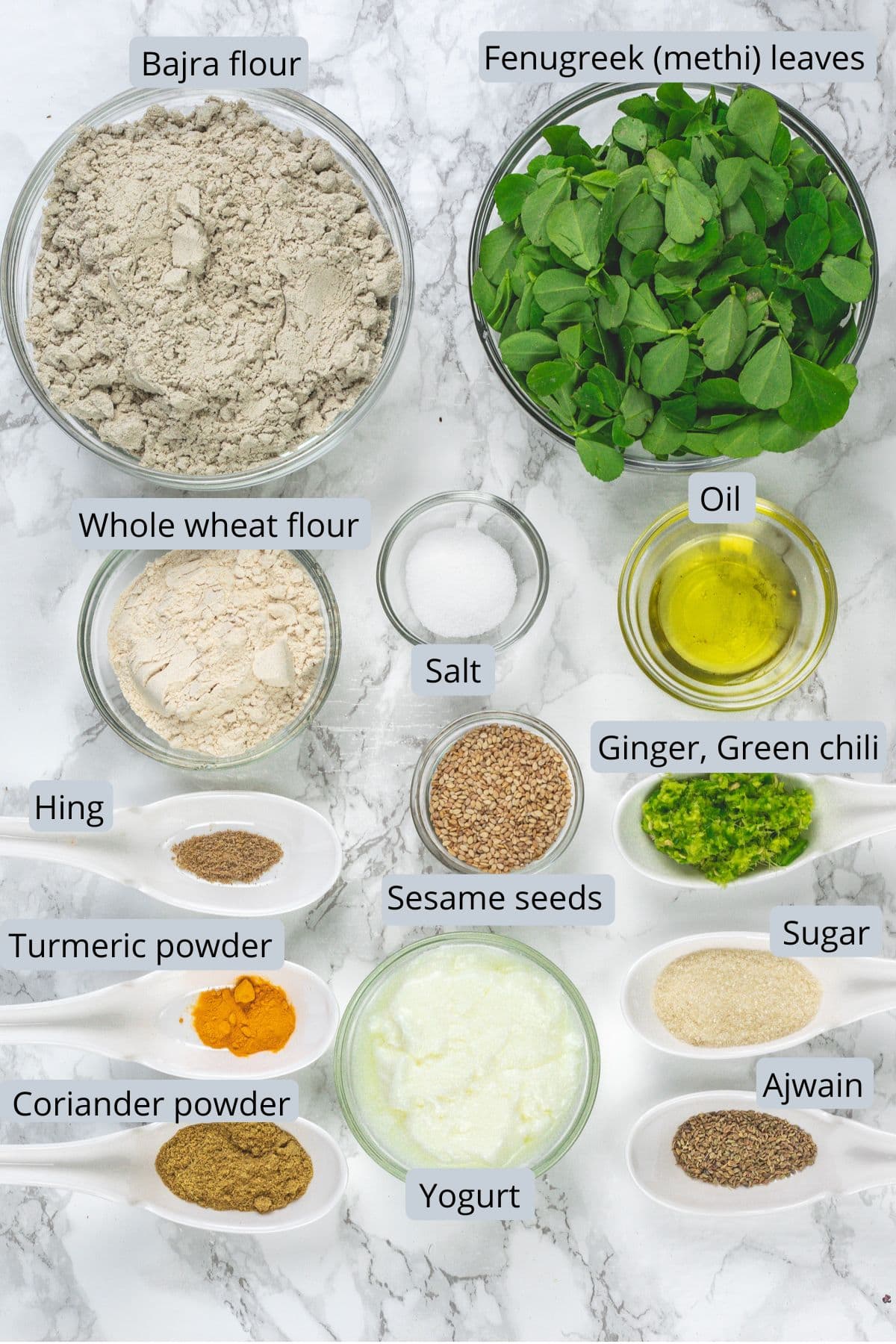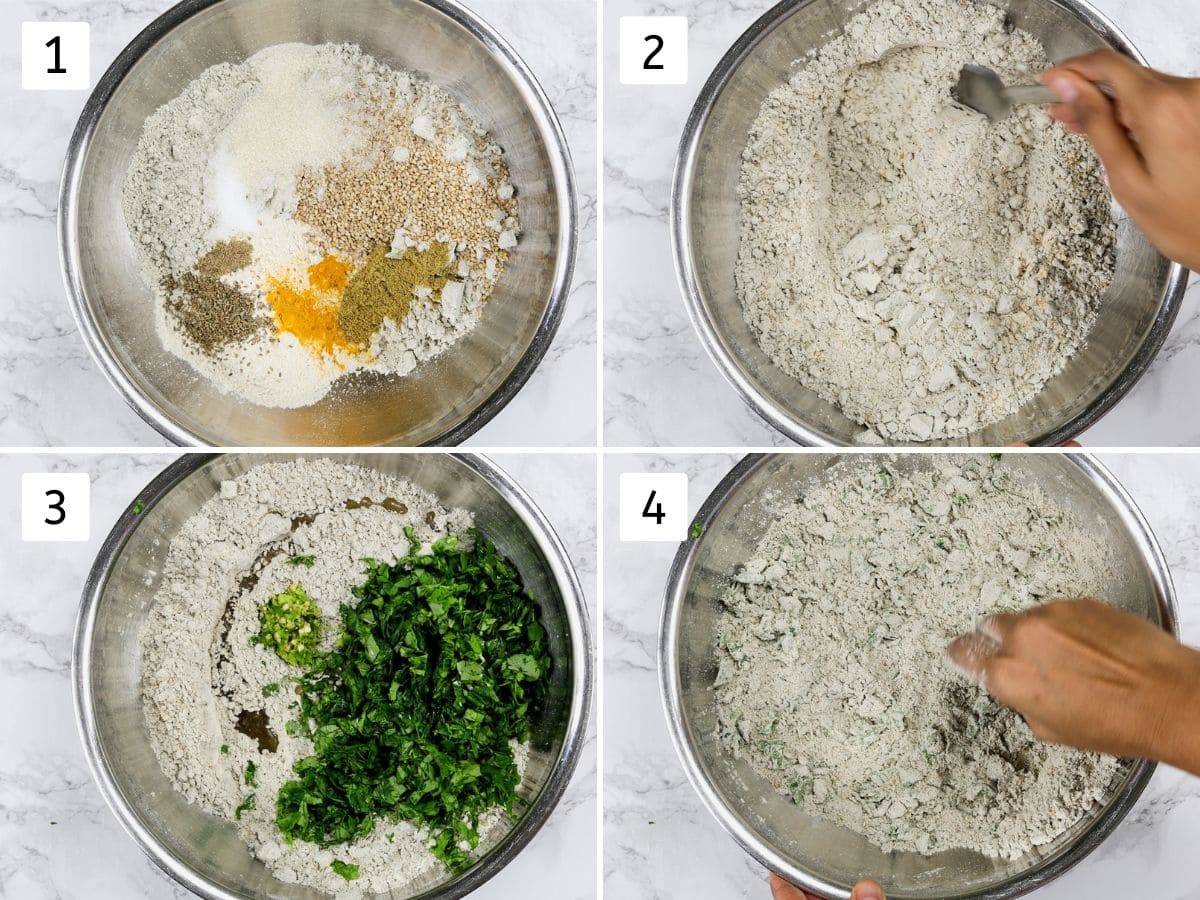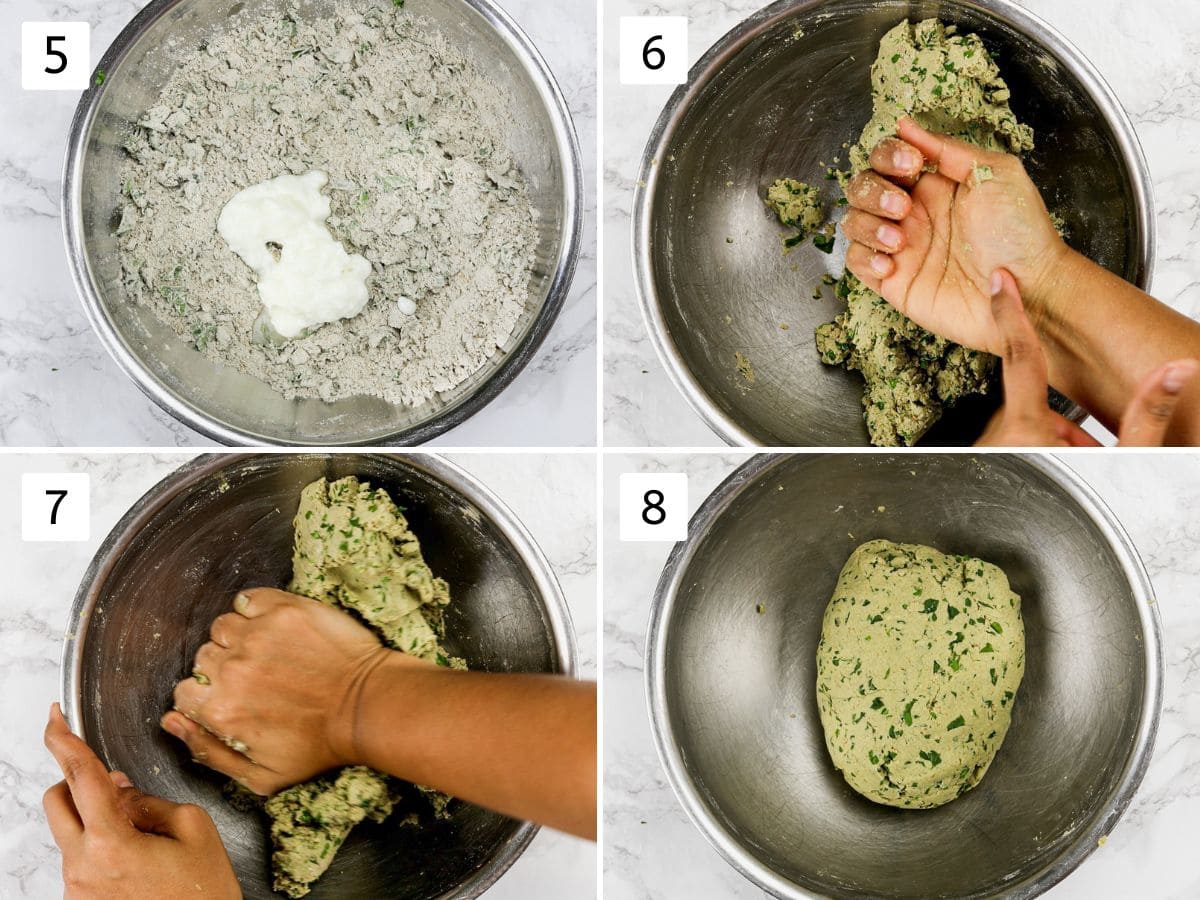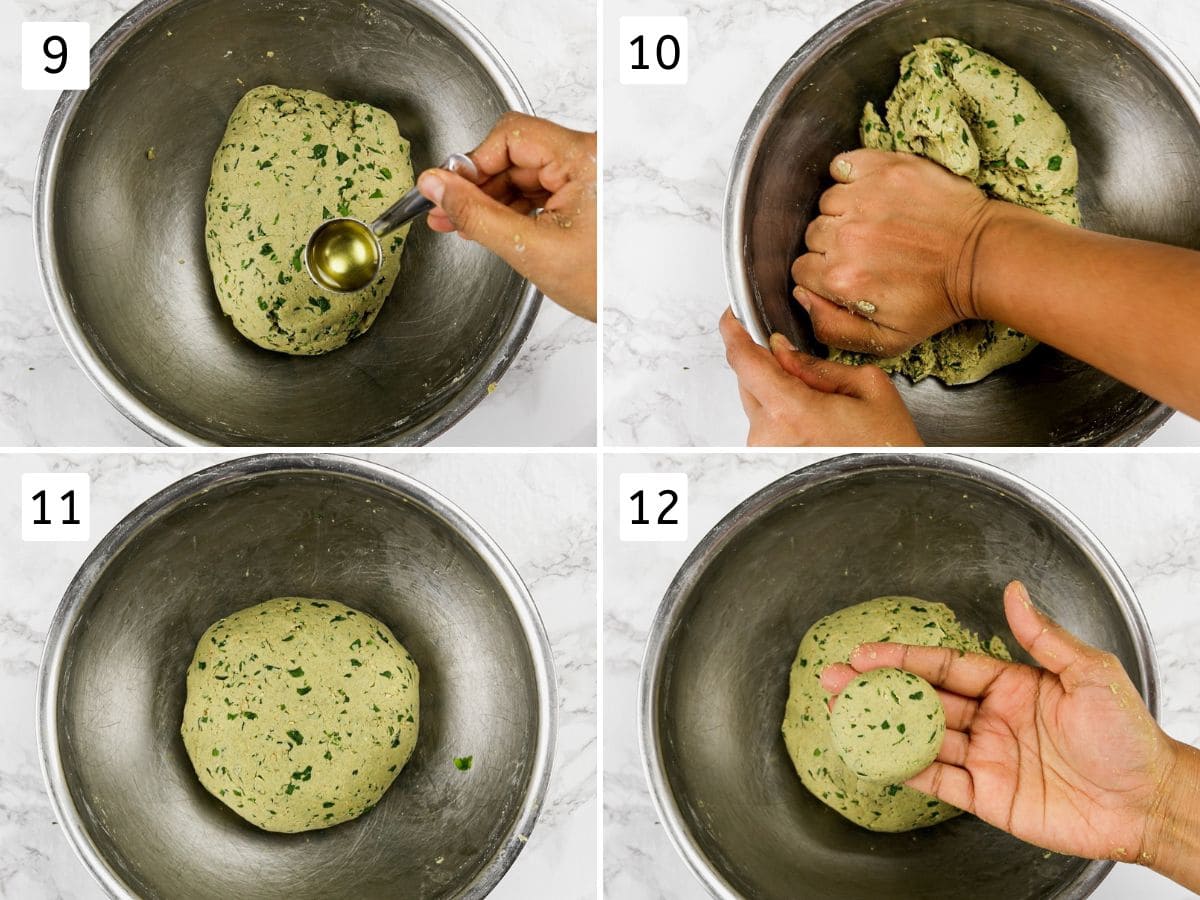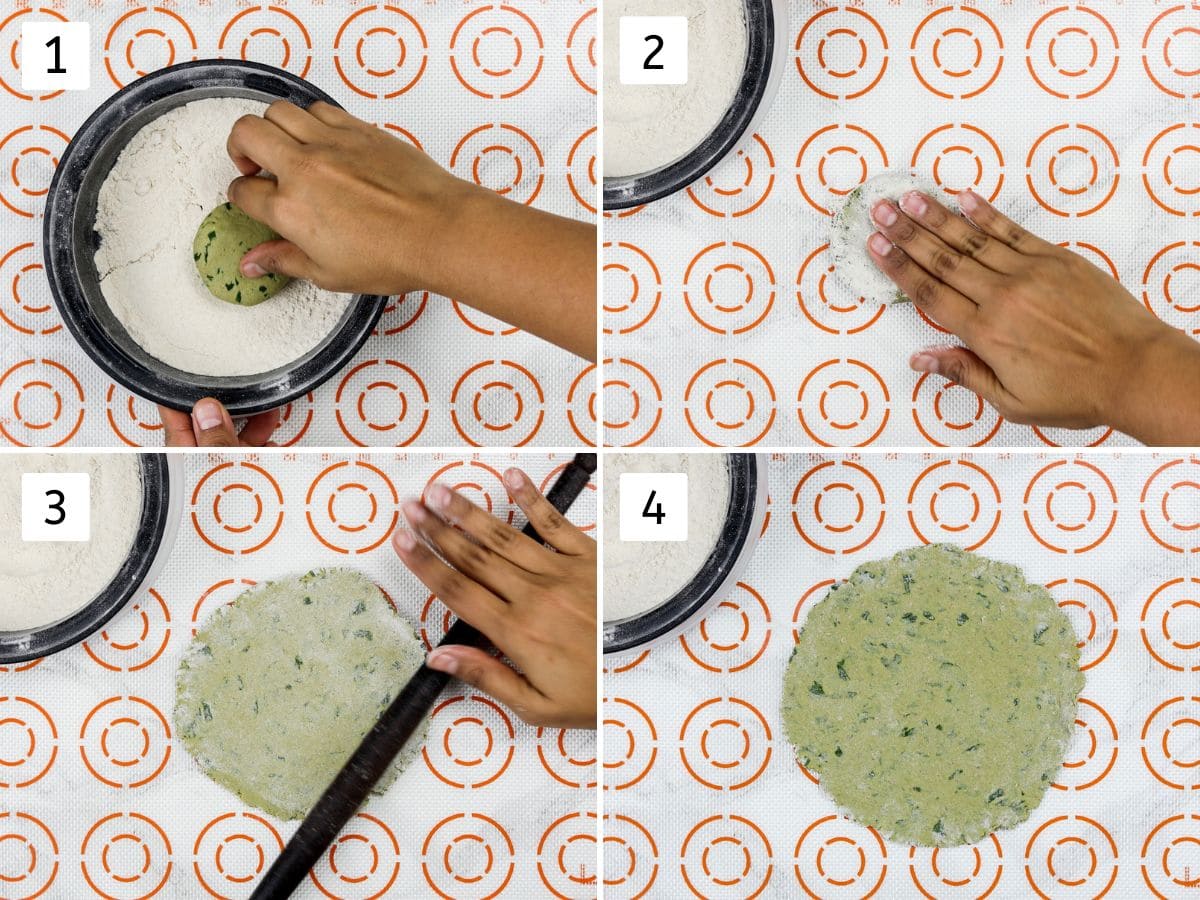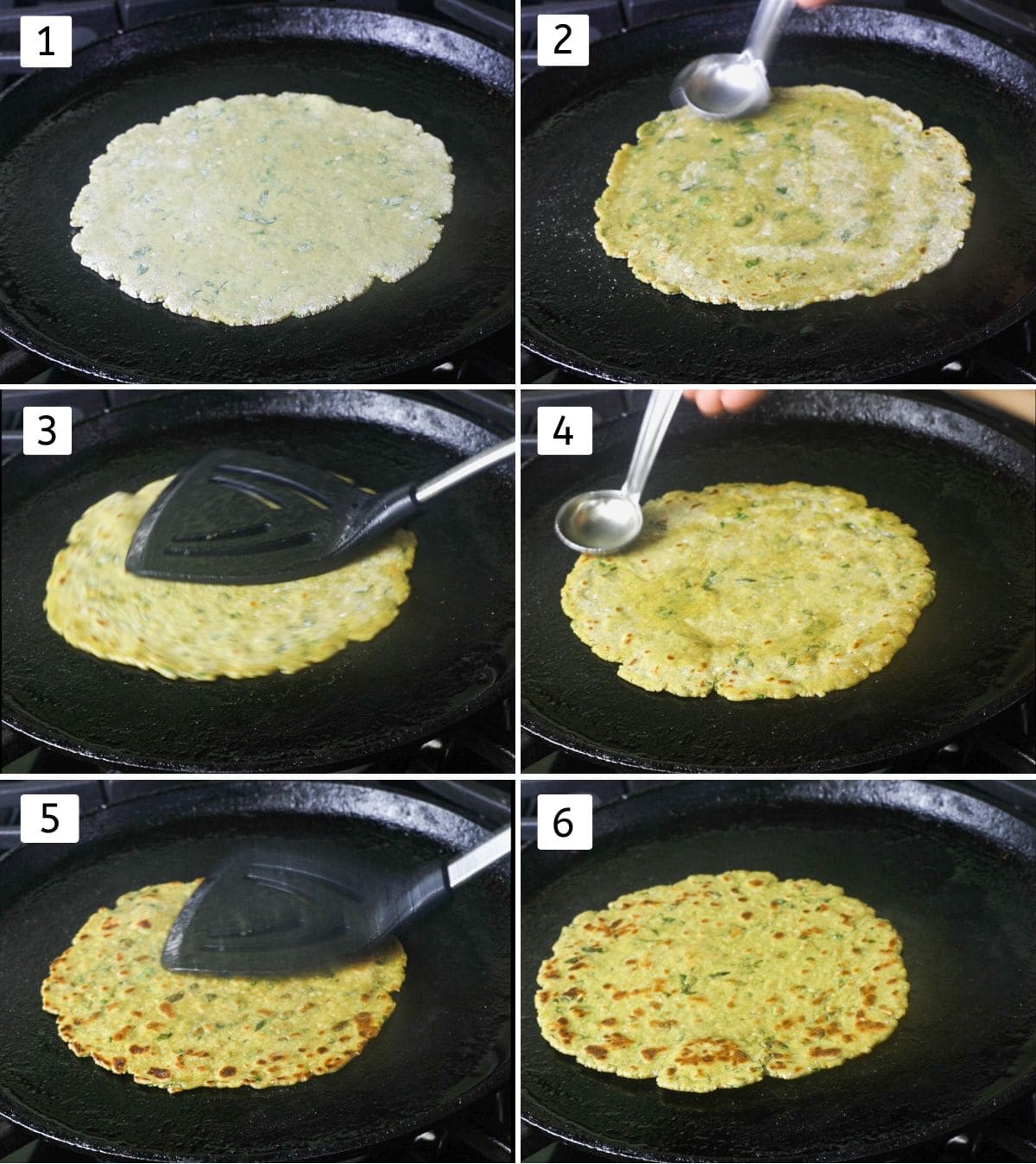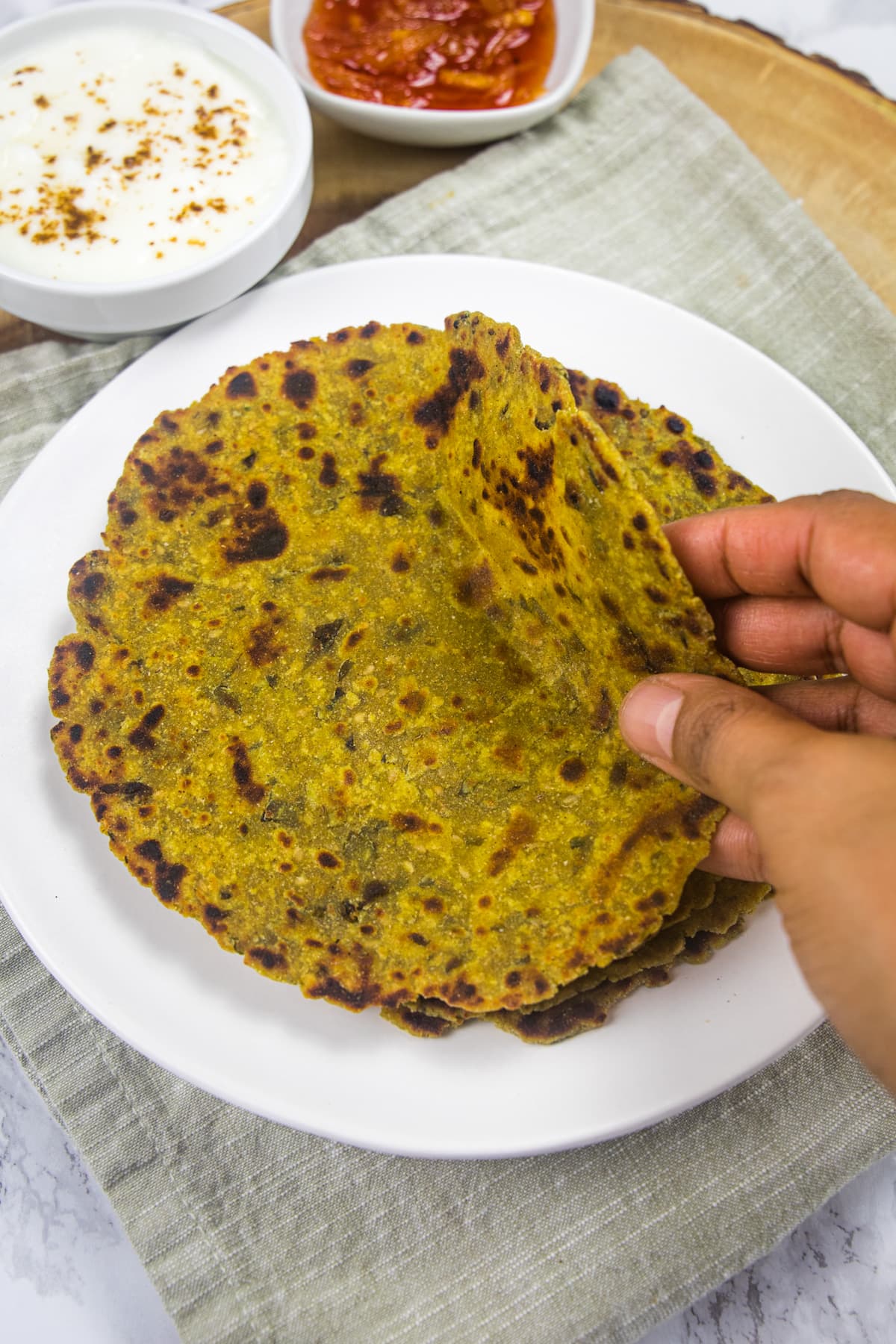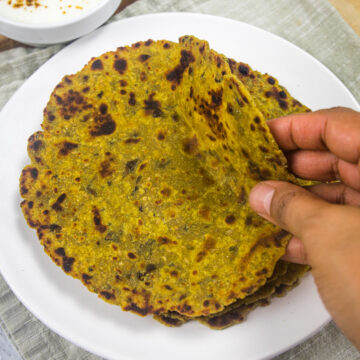What is Dhebra?
Dhebra dough is made from pearl millet flour (bajra atta), fresh fenugreek leaves (methi patta), a few spices, sesame seeds and yogurt. 3 ways to cook methi dhebra The dough is divided into small balls and rolled into a round yet thick paratha and shallow-fried on the tawa using ghee. Some families made deep-fried dhebra recipe by patting a small dough portion into thick discs like bajri vada and then deep fry. Some families roll dhebra dough portion into 3-4 inches diameter poori and then deep-fry. Amongst all three, shallow-frying on tawa is the most common method.
Difference Between Dhebra And Thepla:
Dhebra dough is made from barja flour mixed with a tiny amount of wheat flour. While thepla is made from whole wheat flour (chapati atta) only. Dhebra dough is kneaded using yogurt only (no water is used). While thepla dough is kneaded using water. Dhebra are slightly thick like paratha vs thepla are rolled into the thinner circle than paratha/dhebra. Ghee is used while cooking dhebra while oil is used for cooking thepla. Dhebra always has methi leaves in it, hence the name methi dhebra. While thepla can be plain or made using methi, dudhi (lauki or bottle gourd), karela (bitter ground), etc.
When Dhebra Is Made?
During winter months, dhebra is a must. When dhebra is served with chunda and a bowl of yogurt, it makes a healthy, filling meal. It is made for sitla satam. The ones who follow sitla satam day, do not cook (which means don’t turn on the gas) for that day only and they eat cold, a day before made food. Methi dhebra is one of the food made a day before (aka randhan chhath) as it kept well for a couple of days. It makes a perfect travel food, because of the longer shelf-life.
🧾 Ingredient Notes For Methi Dhebra Recipe
Here is a pic of the ingredients required to make bajra methi dhebra recipe. Texture: These are super soft (melt-in-your-mouth kind).
Pearl millet flour (Bajra atta): Always use fresh millet flour to get the best flavor and taste. This bajra flour should be consumed during winter months only. As bajra is sweet in taste but it turns pungent after digestion and hot in nature. So it will keep you warm and helps to beat the winter chills. Plus, bajra keeps you energetic during winter. Whole wheat flour (Chapati atta): A small amount of wheat flour is added for the binding purpose only as millet flour is gluten-free and stays crumbly. Fenugreek leaves (Methi): I always use fresh methi that is easily available during winter months. If fresh is not available then you can use kasoori methi or frozen methi. See the amount details below. Sesame seeds: Again these are good during winter months for your health. Plus, it adds a nice texture and flavor. Ajwain (carom seeds): It helps in easy digestion. Always crush the ajwain between your palm slightly to release its flavor. Ginger & Green chili: You can crush them in mortar and pestle or use a wet jar of a spice grinder just like me. Sugar: It adds a hint of sweetness that complements well with the bitter flavor of methi. Please do not skip it, you won’t even taste it as its flavor is balanced by adding sour yogurt. Yogurt: Make sure to use sour yogurt for better flavor and taste. Ghee (not in the picture above): It is used to cook dhebra on tawa. You can use oil, but trust me dhebra tastes much better when made with ghee.
👩🍳 How To Make Methi Dhebra? (Pics)
Making Bajra Dhebra Dough:
- Take bajra flour, wheat flour, salt, hing, turmeric powder, coriander powder, sesame seeds, sugar and ajwain (crush ajwain seeds between your palm before adding).
- Mix everything with a spoon or fingers.
- Add crushed ginger, chili, chopped methi leaves and oil.
- Mix everything evenly by rubbing it between your fingers.
- Add almost half of the yogurt and start mixing and kneading the dough. Keep adding a tablespoon of yogurt at a time as needed and keep kneading the dough.
- It will come together like a dough but it is still crumbly. Use the bottom palm of your hand as shown in the pic.
- Give the pressure and knead the dough by using the bottom palm of your hand for about 5 minutes.
- After kneading the dough will become smooth and pliable.
- Drizzle oil over the dough.
- Again using your palm knead it for another 2-3 minutes.
- Make a smooth dough ball. No need to rest the dough.
- Divide the dough into 13-14 equal portions. Make a smooth round ball and gently press it between your palm to make a disk. Rolling Dhebra: Before you start rolling, keep the tawa on medium heat and let it get hot.
- Take one flattened disc and dip it into a dry flour and coat both sides.
- Take that to a rolling surface or board and press it lightly using your fingers to make the disc bigger in size (2 ½ inches in diameter).
- Now start rolling using a rolling pin. Give a very gentle pressure (not like roti, paratha) while rolling. Dust the surface and move it while rolling to avoid sticking. If the edges break too much then seal it using your fingers and run a rolling pin gently on it.
- Roll into a 6-7 inches diameter circle. It will be slightly thicker than a regular paratha, roti. Cooking Methi Dhebra On Tawa:
- Once the tawa is hot, place rolled paratha on the tawa and let it cook for 30-40 seconds. You’ll notice a few bubbles on the surface.
- Flip it (you can see very few brown spots). Apply ghee all over the surface and in the meantime bottom is also cooked slightly.
- Now flip it and cook by gently pressing and moving the dhebra using a spatula.
- Apply ghee on this surface as well.
- Once the bottom surface has golden spots all over it and no more doughy parts left then flip it and cook another surface by pressing and moving it with a spatula.
- Check, the other surface is also cooked and has brown spots all over it. Remove it to a plate and repeat the rolling and cooking rest dhebra.
💭 Tips To Make Perfect Dhebra Recipe
Do not rest the dough otherwise, methi releases its water and the dough will become super soft and sticky. Kneading the dough for 5 minutes using your palm is a must, as bajra flour is gluten-free and stays crumbly. So this kneading part makes it pliable and less crumbly. Roll the dhebra by giving a very light, gentle pressure using a rolling pin. You do not need to give more pressure like roti, paratha. If dhebra is rolled by giving gentle pressure then the edges won’t break. But just in case, if the edges break then seal it using your finger and roll it lightly using a rolling pin. If using frozen methi or kasoori methi then reduce the amount as frozen or dried ones are compacted compared to fresh leaves. Add some chopped green garlic to the dough when it’s in season. Garlicky dhebra tastes good too.
🥣 Storage Instructions
Dhebra stays fresh for 3-4 days at room temperature in an airtight container. So it is good for traveling. You can apply some more ghee on cooked dhebra (just like roti) to increase its shelf-life. If stored in the refrigerator, then it stays good for up to a week. Reheat dhebra on tawa (not in the microwave).
🍽 What To Serve With Dhebra?
Methi dhebra tastes best when served with chunda or mango pickle and a bowl of yogurt. It can be eaten as a snack or breakfast along with your cup of hot tea or coffee. It makes a great lunch-box meal for kids or adults.
Did you try this bajra methi dhebra recipe? I’d love to hear about it! Leave a review in the comment section below.
Undhiyu Sarson ka saag with makki ki roti Bajra ladoo Methi paratha Mooli paratha
